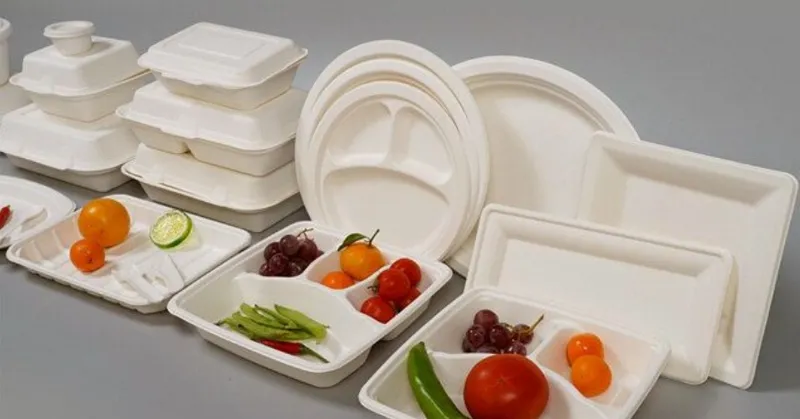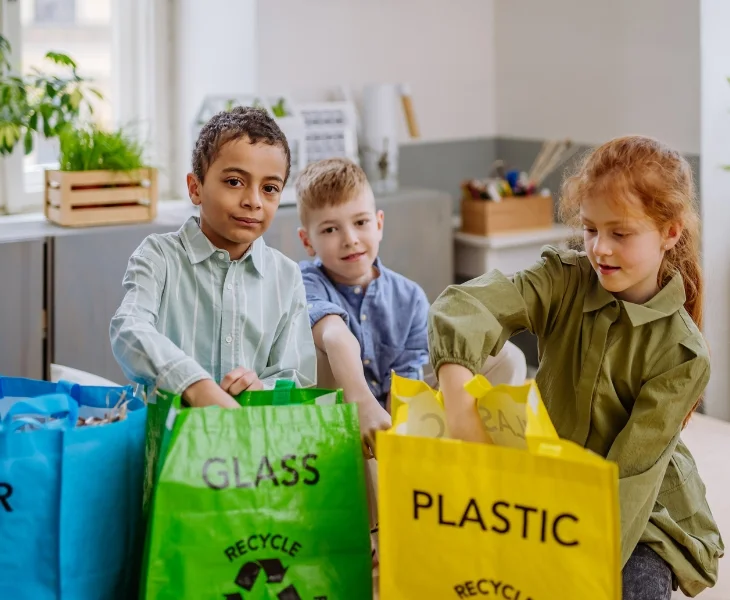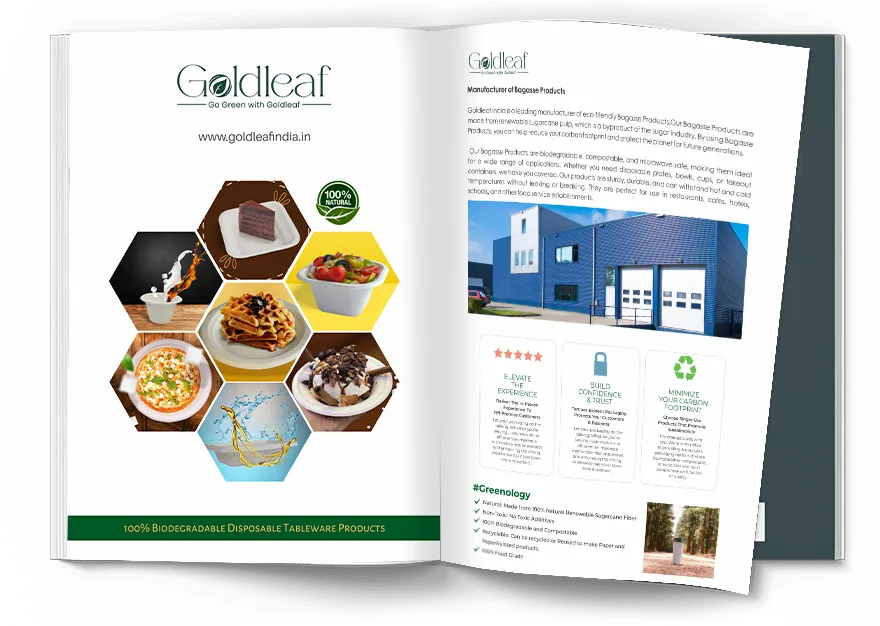Terhubung dengan tim kami
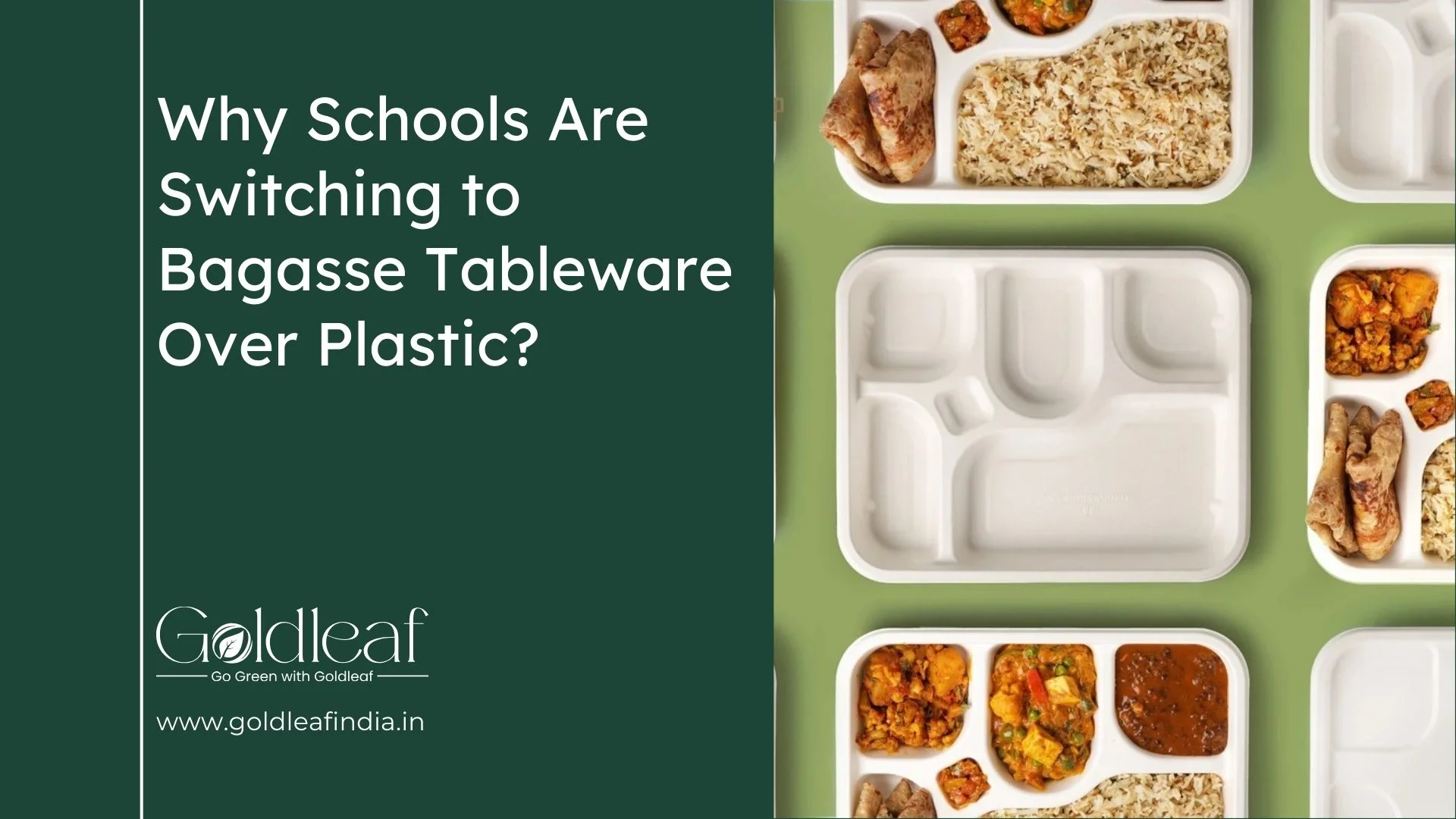
- 2244
In recent years, schools across the globe have been making conscious decisions to adopt sustainable practices, not only in curriculum but also in everyday operations. Change comes in one significant area – from single-use plastic tableware to bagasse tableware. Don’t see this transition as a fad — it’s a sign of growing environmental awareness, health in learning, and cost savings in the long term.
Therefore, why exactly do educational institutions prefer bagasse tableware instead of plastic? So let’s take a look at why this very thing has been changing, and consider how school cafeterias will be redesigned by this natural byproduct of utilizing sugar cane.
What is Bagasse Tableware?
Let’s first understand what bagasse tableware is before getting into the “why.”
Bagasse is a fibrous residue left after extracting juice from sugarcane. This byproduct had been rejected or used in the form of fuel in the sugar mills for over a century. Today, however, it is being turned into biodegradable tableware such as bagasse plates, bowls, trays and compartment containers.
To make a bagasse pulp sturdy, heat-resistant material that can lock in cold or hot food. In contrast to plastic, bagasse breaks down over time naturally in 60–90 days with composting and not in hundreds.
The Plastic Problem in School Environments
1. Environmental Impact
The school dining sector has relied on plastic materials as their main disposable option because both durability and cost-effectiveness make these products ideal. The long-term effects of this situation prove to be extremely concerning.
-
The yearly production of 380 million tons of plastic results in significant disposal of materials in landfills and oceanic areas.
-
The amount of plastic waste generated from school lunch utensils and plates, including forks as well as spoons, remains significant.
-
The decomposition process requires hundreds of years for these materials until toxic substances enter the environment.
2. Health Risks
The recycling process of plastic materials combined with usage for hot food generates toxic chemical releases of BPA, phthalates and microplastics. The comprehensive effects of regular daily use make regulatory agencies and school administrators, along with parents, express their worry.
7 Compelling Reasons Schools Are Choosing Bagasse Tableware
1. Biodegradability and Compostability
One main benefit of bagasse is its automatic decomposition process. Plastic demands centuries to decompose, yet biodegradation of bagasse occurs within 60 to 90 days during composting periods. The disintegration produces nourishing organic materials that strengthen the soil structure, thereby achieving complete waste reduction.
For schools that encourage environmental consciousness, composting used plates and trays becomes not only practical but educational. Compounding waste into resources stands as an accessible educational opportunity through which schools merge science lessons with gardening activities to teach sustainability principles directly to students.
2. Reducing Carbon Footprint
These materials have their origins in sugar-making processes, delivering sugarcane pulp as a waste substance, so new land and water, together with power generation resources, remain unneeded for their production. Scarcely any fossil fuels are required during plastic manufacturing, while this process ends up producing massive amounts of greenhouse gases.
By transitioning to bagasse, schools drastically reduce their carbon emissions from both production and waste management processes. Higher bagasse usage serves as an actionable method for accomplishing carbon emission targets, as it demonstrates sustainable consumption practices to students.
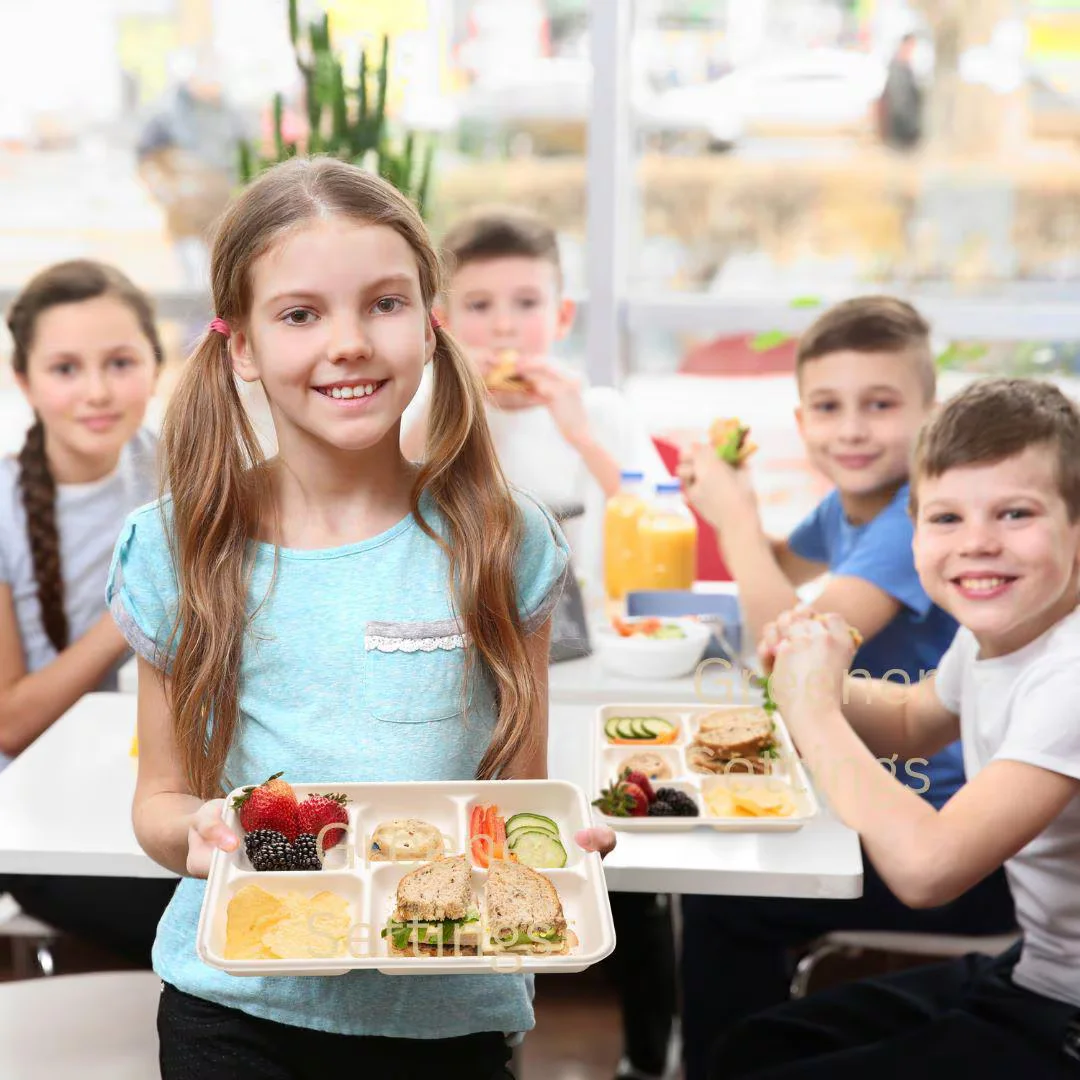
3. Kid-Safe Assurance
Children, especially in elementary and preschool age groups, are more vulnerable to toxins and temperature sensitivity than adults. Safety must be non-compromisable for school lunch programs because of its essential nature.
The materials in bagasse tableware present full food compatibility because they lack any toxic substances and harmful chemicals that are typical in plastic items, such as BPA and phthalates, as well as chlorine and petroleum derivatives. The use of these items is practical for regular child consumption.
Further safety highlights include:
-
No sharp edges – Bagasse plates and bowls are smoothly molded, preventing accidental cuts or injuries.
-
Non-leaching and stable under heat – Even when hot food is served, bagasse doesn’t release any toxic compounds into the food.
-
Allergen-free – Bagasse is made from sugarcane pulp, not wheat, corn, or other common allergens, making it safer for children with dietary sensitivities.
With this level of precaution, schools can serve meals with the peace of mind that their youngest learners are protected.
4. Durability and Functionality
Eco-friendly doesn’t have to mean flimsy. Bagasse products have come a long way in terms of strength and usability. These are heat resistant, microwave safe, and leakproof, to be able to take oily, wet, or heavy meals without flexing or breaking.
The durability of such an operation is a must in fast food cafeterias where time and hygiene are crucial. Hot soup, pasta, or rice-based meals can be served with confidence, but also spills and messes can be avoided for students, and waste reduced on campus.
5. Alignment With Sustainability Education
Sustainability is not a lesson, it’s a way of life. The values that are taught in schools are modeled by adopting eco-friendly tableware. When they eat lunch from compostable plates, it becomes second nature for sustainability.
This can be incorporated into science, social studies, or civic lessons, and the student-led green clubs can track waste reduction progress. The environmental message is made tangible and memorable because the changes in the visual and daily world are visual and daily.
6. Regulatory Pressure on Plastic Use
As plastic bans extend from country to country, many educational institutions are being required to reevaluate their purchasing procedures. A few states in India have banned single-use plastic, and this has also gained strength in some parts of the US, Europe and Southeast Asia.
Bagasse is a reliable and compliant alternative to future-proofing school operations. Proactive institutions can switch early instead of scrambling to react to new rules and gain operational advantage as well as leadership in climate responsibility.
7. Positive Student Engagement
Today’s youth are more engaged than ever in climate activism. When schools adopt visible and impactful changes, like eco-friendly tableware, it sparks conversation and participation. Students are more likely to take pride in their school and feel empowered when they see their environment reflecting their values.
Many schools report increased enthusiasm in green clubs, student councils, and cafeteria sustainability efforts. Activities like waste audits, tray return programs, and compost collection become opportunities for leadership, learning, and civic responsibility.
Choosing the Right Bagasse Tableware for Schools
When sourcing bagasse products, schools should look for:
-
Food-grade certifications (FDA, ISO, BPI)
-
Microwave and freezer compatibility
-
Durability for hot/cold food
-
Designs like 3-compartment or 5-compartment trays to accommodate balanced meals
Reputated Manufacturers like Goldleaf, for example, offer a wide range of customizable, high-quality bagasse products like bagasse bowls, plates, cups and clamshells, and more tailored for institutional use.
Final Thoughts: A Small Change, A Big Impact
You might think bagasse tableware is just a small change in the operations of a school, but the impact is just that big. This makes this push perfectly in line with the values of modern educational institutions to promote health and educate their students on lifelong habits of sustainability.
With the world turning away from the use of plastics, Eco-friendly options such as the use of bagasse tableware are gaining popularity and are setting the example with one tray, plate, and bowl at a time.
- Produk
- Bowl
- Clamshell
- Compartment Plate
- Plate
- Tea Cup
© 2024 , Goldleaf ,
Semua hak dilindungi undang -undang.
Made & Managed by Lightlink Solutions

